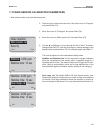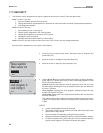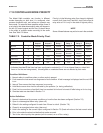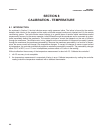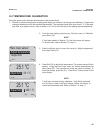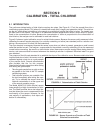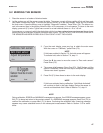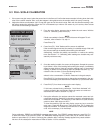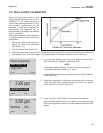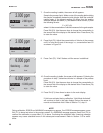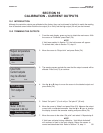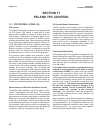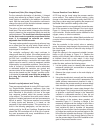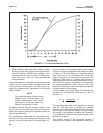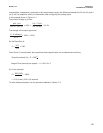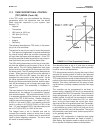
MODEL TCL SECTION 9
CALIBRATION - TOTAL CHLORINE
9.4 DUAL SLOPE CALIBRATION
Figure 9-3 shows the principle of dual
slope calibration. Between zero and con-
centration C1, the sensor response is
linear. When the concentration of chlo-
rine becomes greater than C1, the
response is non-linear. In spite of the
non-linearity, the response can be
approximated by a straight line between
point 1 and point 2.
Dual slope calibration is rarely needed. It
is probably useful in fewer than 5% of
applications.
1. Be sure the analyzer has been con-
figured for dual slope calibration.
See Section 7.11.
2. Zero the sensor. See Section 9.2.
3. Place the sensor back in the flow cell. Confirm that excess sample is flowing down the inside tube of the over-
flow sampler. Also, verify that reagent is being delivered to the sample and the air pump is working.
FIGURE 9-3. Dual Slope Calibration
Adjust temperature
Dual range cal
Output trim
Exit Enter
4. From the main display, press any key to obtain the main menu.
With the cursor on “Calibrate,” press Enter (F4).
NOTE
If Hold was enabled in Section 7.6, the hold screen will appear.
To activate hold, refer to Section 7.6, step 11.
Press the key three times to move the cursor to “Dual range cal.”
Press Enter (F4).
5. Adjust the concentration of chlorine in the process until it is near the
upper end of the linear response range of the sensor, i.e., concen-
tration near C1 as shown in Figure 9-3.
6. Press Cont (F3). “Wait” flashes until the sensor is stabilized.
If the controller appears locked, the reading is not stable enough.
Wait until the process readings are stable before starting the cali-
bration.
2.000 ppm
Calibrate low point
Abort Cont
2.000 ppm
Stabilizing . . . Wait
Abort Cont
49



